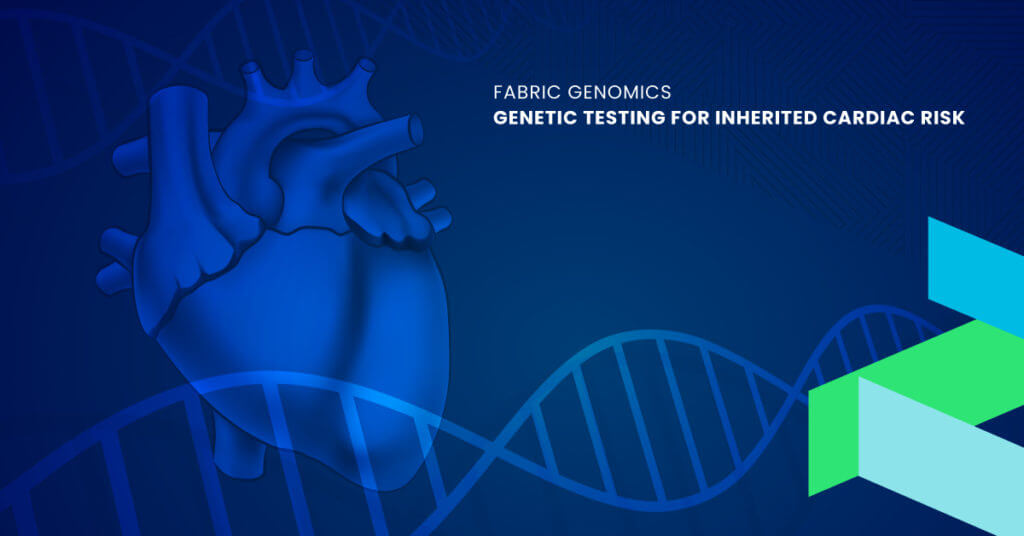
BLOG
Genetic Testing for Inherited Cardiac Risk
By Laura Yecies
April 29, 2021
Heart disease is the leading cause of death for men and women in the United States.1 Many different types of heart disease can be inherited. Some common conditions such as high blood pressure or coronary artery disease run in families but are probably due to multiple genetic variations (polygenic). Each variation individually confers a small increased risk and likely works together in a complex manner to cause disease. Genetic testing is at the early stage of development for these cases (for instance polygenic risk analysis for hypertension is in development), however, there are a number of inherited heart diseases that are caused by just one or a few genetic changes. Testing protocols for these diseases are well established. These genes are both highly penetrant and deleterious and therefore are strongly linked to serious disease. Examples of these conditions include:
- Cardiomyopathies, such as hypertrophic cardiomyopathy (HCM), dilated cardiomyopathy (DCM), and arrhythmogenic right ventricular cardiomyopathy (ARVC) – these are conditions that affect the heart muscle and can lead to heart failure.
- Inherited arrhythmias – these are also inherited heart conditions that affect the electrical system of the heart, causing abnormal heart rhythms called arrhythmias. Examples include Long QT syndrome and Brugada syndrome. These arrhythmias can be deadly and may require changes in lifestyle or medical therapy.
- Aortic dysfunctions (including aneurysms and dissections), are genetic conditions that affect the main artery, the aorta. Bulging of the wall of the aorta (aneurism) can lead to rupture of the vessel, while tears in the aorta can lead to separation of the inner and middle layers of the aorta (dissection). Both can be life-threatening. Examples include Marfan syndrome, Loeys Dietz syndrome, Ehler Danlos syndrome.
- Familial hypercholesterolemia is a condition with extremely high LDL cholesterol levels that greatly increase the risk of heart attack
In the past, knowledge of one of these inherited conditions has tragically come about from a sudden, often fatal, cardiac incident, frequently impacting young people at the prime of their lives. Fortunately, with advances in Next Generation Sequencing (NGS) technology, it is now possible to test for these conditions. Comprehensive cardiac risk panels cover all of these conditions. Importantly, knowledge of the condition may significantly affect the treatment and management of the patient. Specific medications, devices such as implantable defibrillators, and exercise and lifestyle interventions may be called for and can be very effective in extending lives.
This testing is now at the point where it is cost-effective and makes sense from a public health point of view. Guidelines are emerging and the latest version from the American Heart Association is described here. But all the major societies (including the American College of Cardiology, the American Heart Association, and the Heart Failure Society of America) recommend testing for those individuals with established or suspected clinical conditions. Assays for these panel tests are widely available. Fabric Genomics provides software that facilitates the analysis of the sequencing results. It provides a seamless workflow, taking the output from sequencing machines and carrying out secondary and tertiary analyses. Given the significant growth in the volume of these tests, it is critical that interpretation can be done accurately yet efficiently. AI-based software such as Fabric ACE is an example of such a tool while being fully ACMG compliant. Fabric ACE has long been used for Hereditary Breast and Ovarian Cancer screening and a number of other hereditary risk gene groups and we are now seeing rapid growth in the cardiac space – exciting due to the large potential clinical impact. Given the seriousness of these conditions, the actionability of a diagnosis, and the declining cost of the testing we expect to see significant growth in this testing and, hopefully, improved health and lifespan for those with these conditions.
- Centers for Disease Control and Prevention. Underlying Cause of Death, 1999–2018. CDC WONDER Online Database. Atlanta, GA: Centers for Disease Control and Prevention; 2018. Accessed March 12, 2020.
SUBSCRIBE
